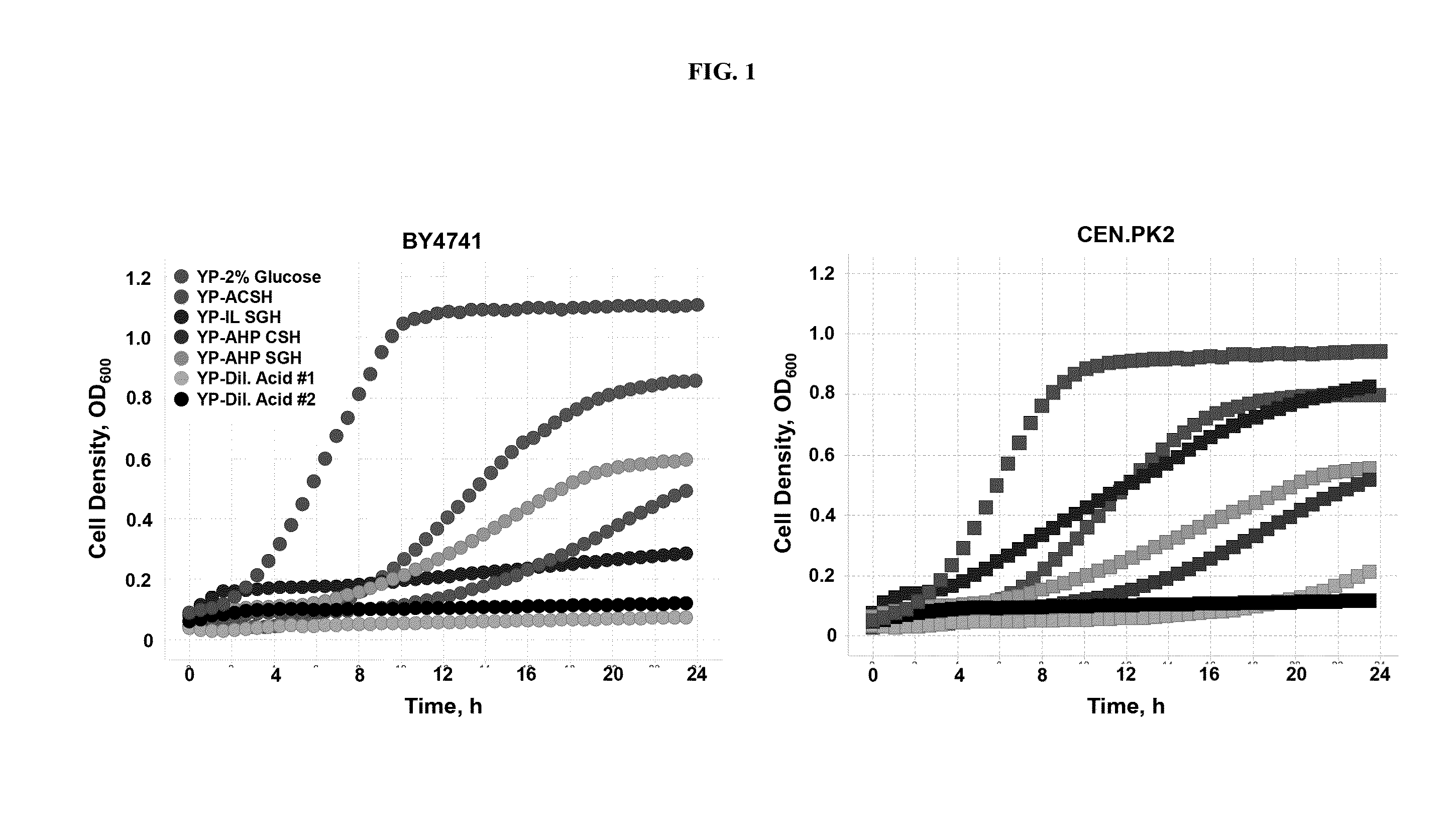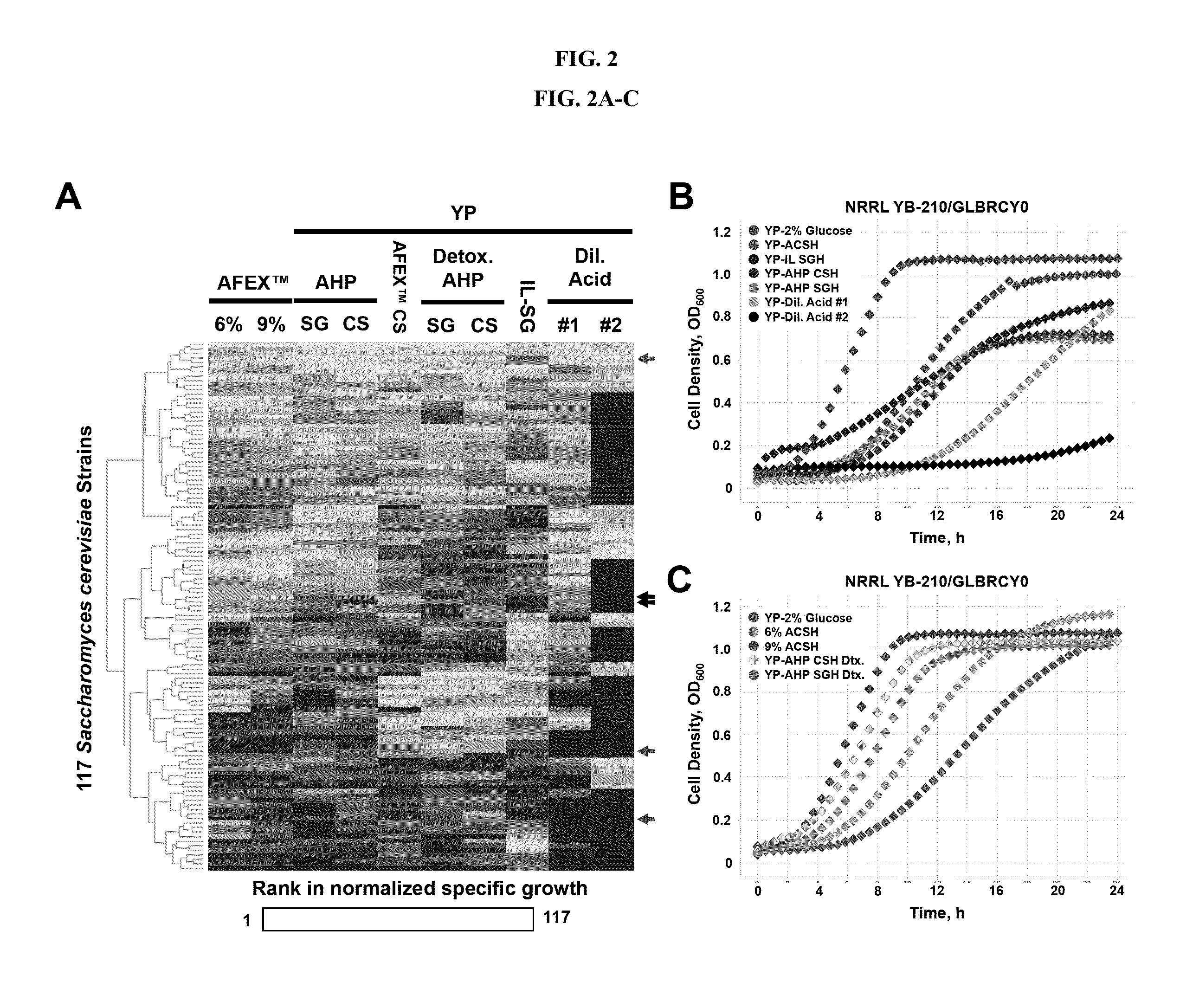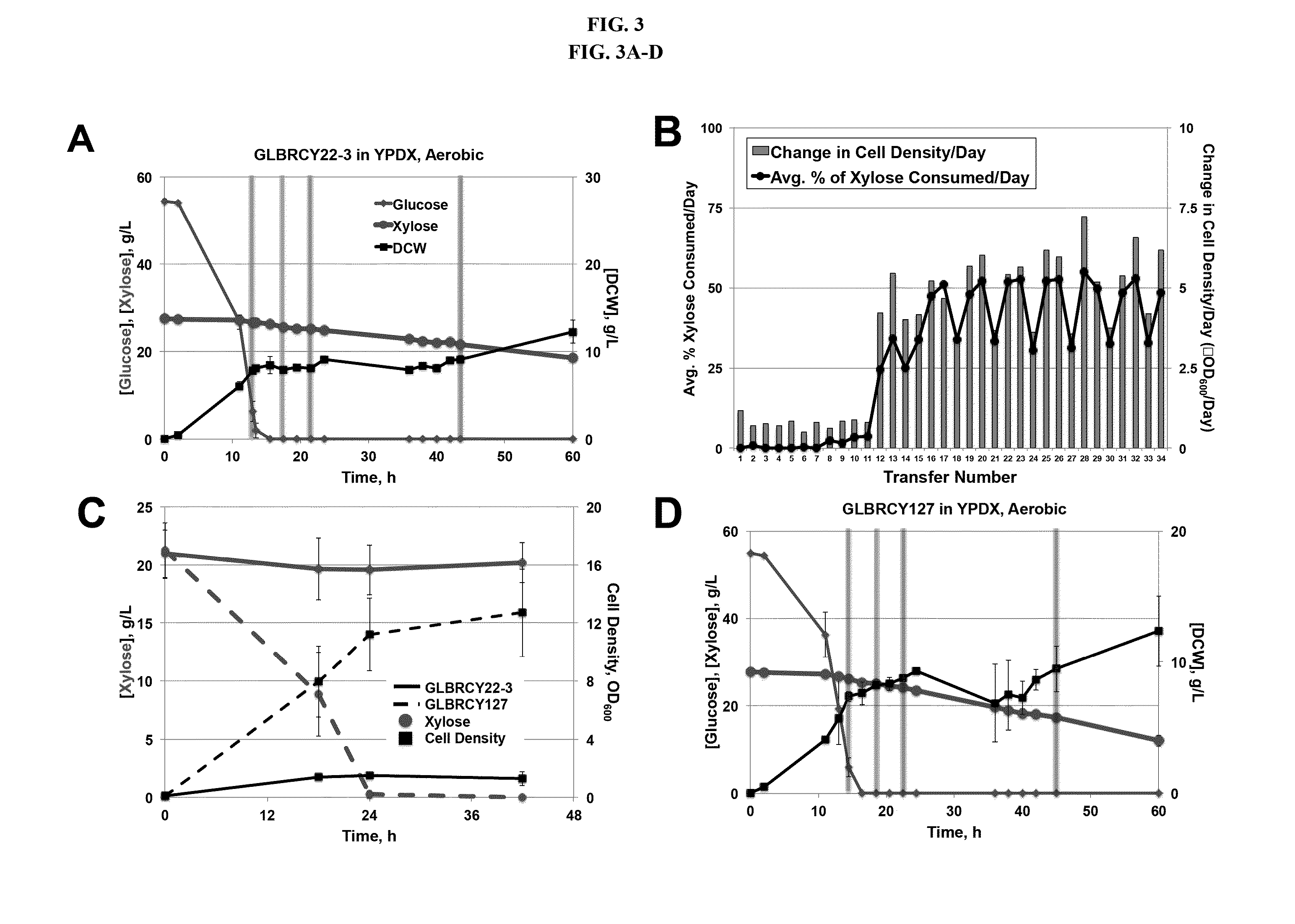Recombinant yeast having enhanced xylose fermentation capabilities and methods of use
a technology of xylose and recombinant yeast, which is applied in the field of genetically modified yeast strains, can solve the problems of not being able to ferment xylose from innocuous lab media at industrially acceptable rates, and enhancing biofuel production, so as to improve the utilization rate of xylose and the capacity for anaerobic fermentation
- Summary
- Abstract
- Description
- Claims
- Application Information
AI Technical Summary
Benefits of technology
Problems solved by technology
Method used
Image
Examples
example 1
Genetic Engineering and Two-Stage Directed Evolution of a S. cerevisiae Strain Tolerant to Pretreated Lignocellulosic Hydrolysates
[0066]The primary goal of this research was to develop and characterize a S. cerevisiase strain that can effectively ferment xylose anaerobically from AFEX™-pretreated lignocellulosic biomass. First, two well-characterized laboratory strains, BY4741 and CEN.PK2 (Entian K D & Kotter P (2007) Yeast Genetic Strain and Plasmid Collections. (Academic Press, Amsterdam)), were evaluated for their potential to serve as starting points for this research by evaluating their general growth tolerance in lignocellulosic hydrolysates (LCHs) generated from a range of established pretreatments and feedstocks. While both strains reached saturated cell density within 8 hours after inoculation in YPD media, they grew at substantially slower growth rates and reached lower cell densities in the pretreated lignocellulosic hydrolysates (FIGS. 1A-B), even though glucose concentr...
example 2
Assessing Xylose Consumption by GLBRCY127 and Y128
[0073]After clearly establishing the xylose consumption phenotypes of the Y127 and Y128 strains, we next wanted to better understand the potential genetic mechanisms by which these strains could have evolved. One possibility would be through mutations in the engineered genes XylA, TAL1, and XKS1 that increase their expression or activities. However, when the engineered gene cassette was sequenced, no DNA sequence differences were identified. An alternative possibility is that the Y127 or Y128 strains obtained gain-of-function mutations in native genes that code for xylose metabolism enzymes, which are normally expressed at low levels or lack sufficient activities rapid flux into the pentose phosphate pathway (Jeffries et al., Applied microbiol. and biotechnol. 63:495 (2004)). The S. cerevisiae genome contains a number of putative enzymes with xylose reductase activities, most notably the aldolase GRE3, which convert xylose into xylit...
example 3
Mutations in ISU1, HOG1, GRE3, and IRA2 Co-Segregate With Evolved Phenotypes
[0077]Our phenotypic analyses of GLBRCY22-3, GLBRCY127, and GLBRCY128 strains indicates that each have differential abilities to metabolize xylose under aerobic and anaerobic conditions (2). Furthermore, metabolite analyses and targeted DNA sequencing further determined that a loss-of-function mutation in GRE3 that emerged during the evolution of Y128 was critical for its ability to ferment xylose anaerobically. However, deletion of GRE3 alone in the Y127 strain could not phenocopy Y128 for xylose fermentation, suggesting that additional mutations were necessary. To better understand the genetic mutations that confer xylose metabolism, we applied a combination of long and short read genome resequencing to identify the evolved mutations in Y127 and Y128. From these approaches, we first assembled and annotated the complete Y22-3 genome sequence. We then utilized the Genome Analysis Toolkit (GATK) to identify s...
PUM
| Property | Measurement | Unit |
|---|---|---|
| concentrations | aaaaa | aaaaa |
| concentrations | aaaaa | aaaaa |
| concentrations | aaaaa | aaaaa |
Abstract
Description
Claims
Application Information
 Login to View More
Login to View More - R&D
- Intellectual Property
- Life Sciences
- Materials
- Tech Scout
- Unparalleled Data Quality
- Higher Quality Content
- 60% Fewer Hallucinations
Browse by: Latest US Patents, China's latest patents, Technical Efficacy Thesaurus, Application Domain, Technology Topic, Popular Technical Reports.
© 2025 PatSnap. All rights reserved.Legal|Privacy policy|Modern Slavery Act Transparency Statement|Sitemap|About US| Contact US: help@patsnap.com



